Dagestan is a region of Russia located in the North Caucasus Mountains. It is a land of rugged beauty, home to a wide variety of species of birds. From the western steppes to the mountains of the east, Dagestan is a haven for birdwatchers and wildlife enthusiasts.
The region is home to over 200 species of bird, including many of the rarest species in the world. The variety of habitats, from the low-lying wetlands to the lofty peaks of the mountains, make Dagestan a great place to observe the many birds that live here.
Whether you’re interested in observing rare species or simply want to take in the beauty of the region’s avian population, Dagestan is an ideal destination.
1. Black-winged Stilt
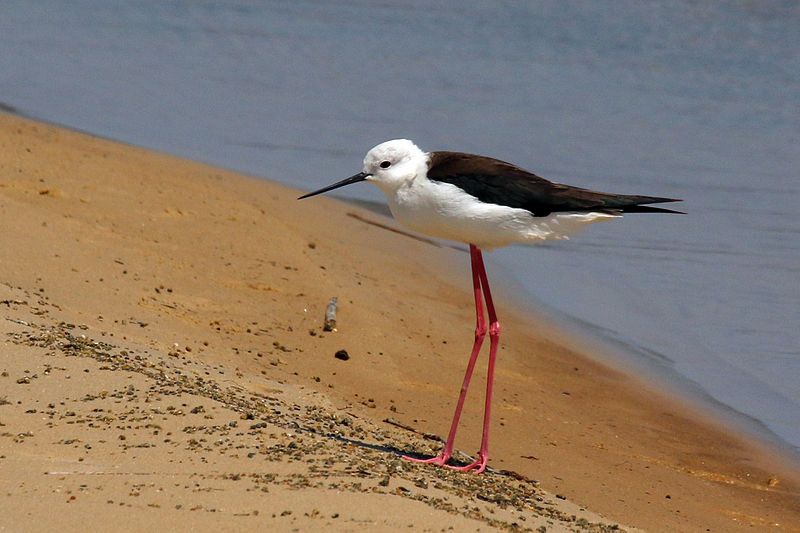
The black-winged stilt is a species of wading bird belonging to the avocet and stilt family. It can be found in almost every region of the world and has extremely long legs. This species is known scientifically by the name H. himantopus.
This name is sometimes used to refer to a single species that is cosmopolitan, meaning that it is found across the world. The black-winged stilt is a popular species of bird due to its unique and attractive appearance, as well as its impressive size.
It has a black body with white feathers covering its wings, and a long, slender beak. It is an important species because it helps keep the aquatic habitats healthy by feeding on small aquatic creatures like insects and crustaceans.
It is a vital part of the natural environment, and its presence is an important indicator of healthy water systems.
| Kingdom | Animalia |
| Phylum | Chordata |
| Class | Aves |
| Order | Charadriiformes |
| Family | Recurvirostridae |
| Genus | Himantopus |
| Species | H. himantopus |
2. Eastern Imperial Eagle
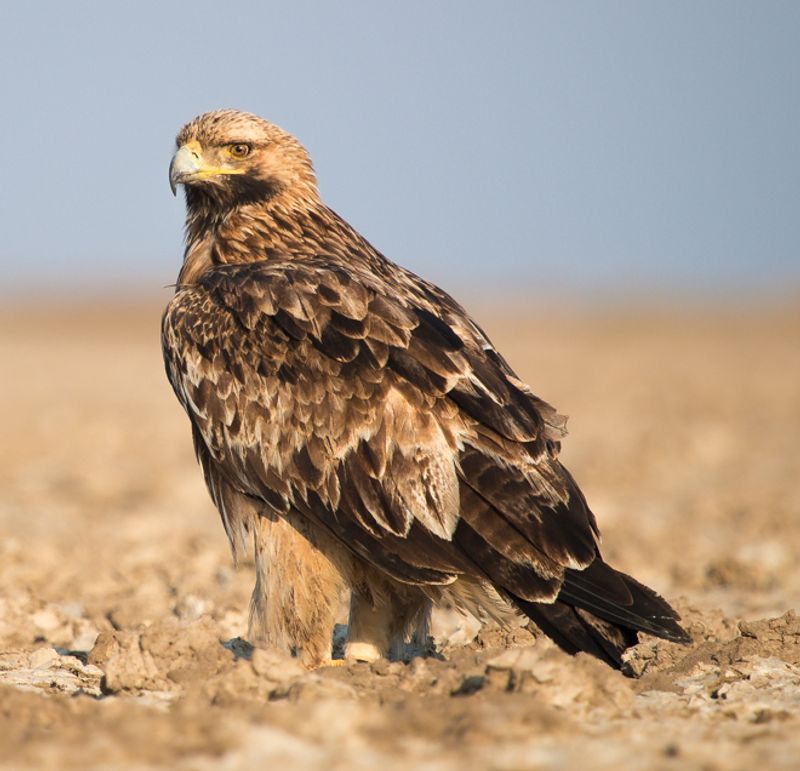
The eastern imperial eagle is a magnificent bird of prey that inhabits a wide range of habitats across Europe and Asia. It is found throughout southeastern Europe, as well as in much of West and Central Asia.
As the bird is migratory, it is known to travel far distances, spending its winters in various regions such as northeastern Africa, the Middle East, and South and East Asia. This impressive species is large and powerful, with a wingspan of approximately two meters.
It is usually found perched atop high trees or poles, making it a majestic sight to behold. Furthermore, this species is known to feed on a variety of small mammals, reptiles, and even birds.
The eastern imperial eagle is considered an endangered species, with its population having drastically declined over the years due to various human activities and environmental issues. As a result, conservation efforts are being implemented to help protect this species.
Several governments and organizations are now working together to protect its habitats and monitor the population, in order to ensure that this majestic species will remain in our skies for many generations to come.
| Kingdom | Animalia |
| Phylum | Chordata |
| Class | Aves |
| Order | Accipitriformes |
| Family | Accipitridae |
| Genus | Aquila |
| Species | A. heliaca |
3. Tufted Duck
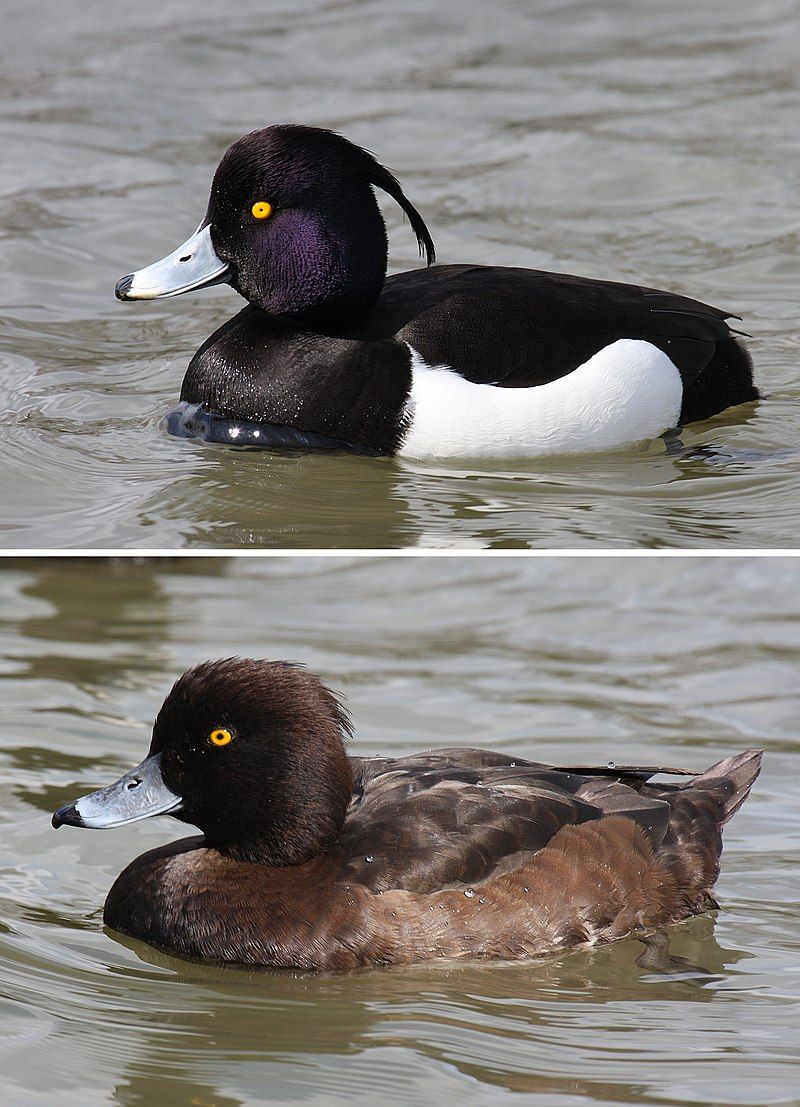
The Tufted Duck, also known as a Tufted Pochard, is a species of small diving duck native to northern Eurasia. It is estimated that there are currently close to one million individuals of this species still in existence.
The scientific name of the Tufted Duck is derived from two ancient sources: the Ancient Greek word “aithuia,” which was used to describe an unidentified seabird and was mentioned in various writings including those of Hesychius and Aristotle, and the Latin words “fuligo” and “gula,” which mean “soot” and “throat” respectively.
The Tufted Duck is a relatively small bird, usually measuring between 12 and 15 inches in length. It has a characteristic tuft of feathers along the top of its head.
The bird is most commonly found in wetlands, such as lakes, ponds, and marshes, where it can be seen diving for food. It has a diet consisting primarily of aquatic insects, small fish, and crustaceans.
The Tufted Duck is a migratory species, with some populations relocating southwards during the winter months. The bird is also a strong flyer, with the ability to reach speeds of up to 60 miles per hour when in flight.
The Tufted Duck is an important species for conservationists, as its numbers have been decreasing in recent years due to habitat destruction and other human activities. As such, it is listed as a species of least concern by the International Union for Conservation of Nature.
| Kingdom | Animalia |
| Phylum | Chordata |
| Class | Aves |
| Order | Anseriformes |
| Family | Anatidae |
| Genus | Aythya |
| Species | A. fuligula |
4. Gypaetus Barbatus
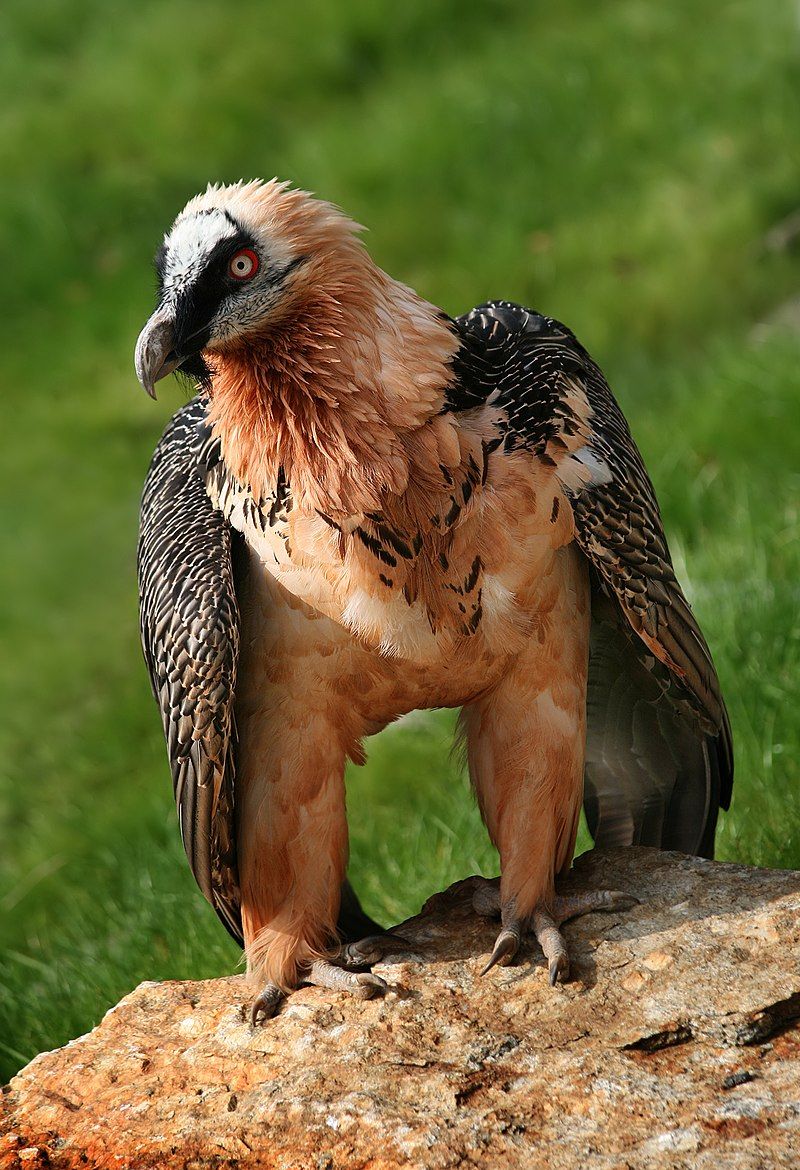
The bearded vulture is a large bird of prey belonging to the Accipitridae family and is the only bird of its genus, Gypaetus. It is also known by the names lammergeier and suffrage.
It has traditionally been classified as an Old World vulture, but recent studies suggest that it is more closely related to the Egyptian vulture, its closest living relative. The bearded vulture is found in mountainous regions of Eurasia and Africa and is the only species of vulture to build a nest out of sticks.
It is also known for its distinctive ruff of feathers around its neck that gives it its name. It is a scavenger, feeding mainly on carrion, but it will also hunt small prey such as rodents, reptiles, and ground-nesting birds.
It can also feed on the bones of large animals, which it can crush with its powerful beak. The bearded vulture is a threatened species due to hunting, habitat destruction, and poisoning from animal carcasses.
Conservation efforts are underway to protect this species, including captive breeding programs and the protection of its habitat.
| Kingdom | Animalia |
| Phylum | Chordata |
| Class | Aves |
| Order | Accipitriformes |
| Family | Accipitridae |
| Genus | Gypaetus |
| Species | G. barbatus |
5. Eurasian Hoopoe
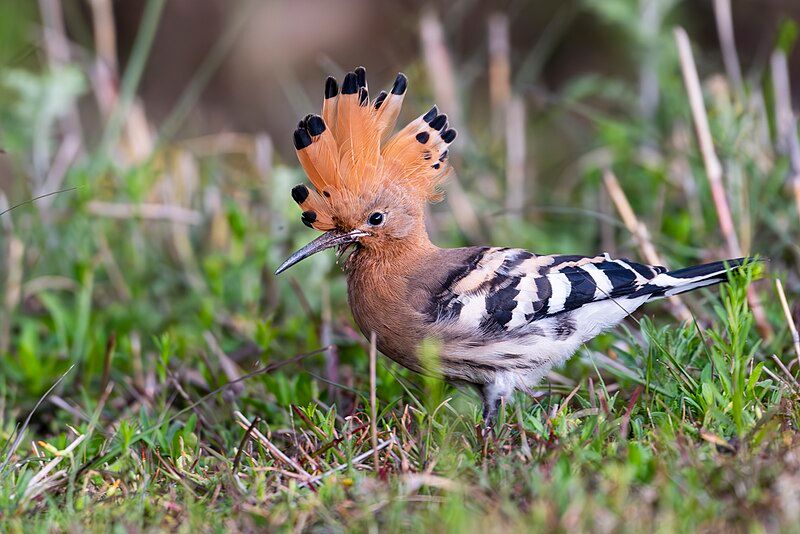
The Eurasian hoopoe is a beautiful and unique species of bird. It is easily recognizable due to its distinctive cinnamon-colored feathers, along with its black and white wings, tall erectile crest, a broad white band across a black tail, and a long narrow downcurved bill.
It is the most widespread species of the genus Upupa, found in many different areas across the globe. It is a bird that is both admired and cherished by many. The Eurasian hoopoe has a soft call that is often described as an “oop-oop-oop”.
This is a sound that many people find to be calming and peaceful. It is a sound that can also be used to identify the Eurasian hoopoe when it is in the wild.
People who are out exploring nature may be able to hear this sound and can then look for the bird in order to get a better look at it. The Eurasian hoopoe is an amazing bird that is truly one of a kind.
Its unique features and beautiful color make it stand out from other species. It is also a species that is found all across the world, making it a truly global species.
Not only is the Eurasian hoopoe a joy to look at, but its soft call also brings a certain level of peace and tranquility to the area.
| Kingdom | Animalia |
| Phylum | Chordata |
| Class | Aves |
| Order | Bucerotiformes |
| Family | Upupidae |
| Genus | Upupa |
| Species | U. epops |
6. Great Bustard
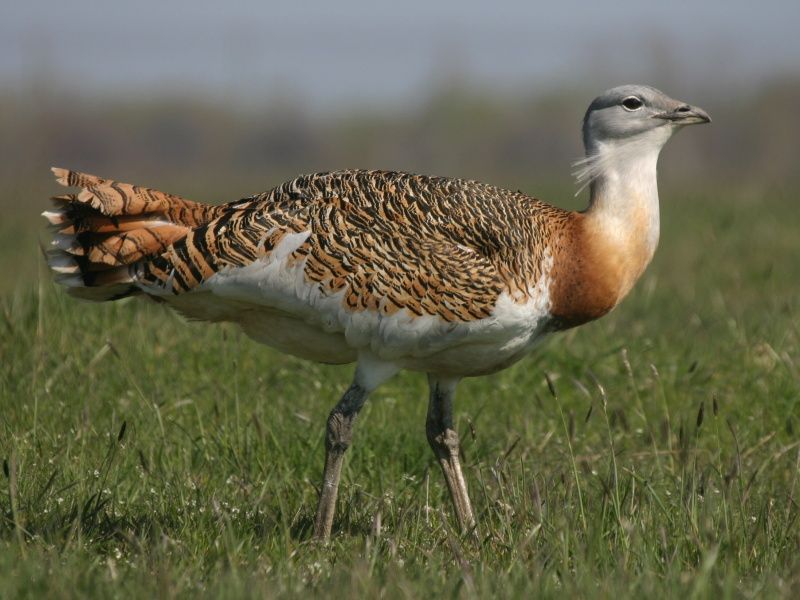
The great bustard is an iconic bird species belonging to the bustard family. It is the only living member of the genus Otis, making it a unique species. It is found in many different regions, ranging from northern Morocco to East Asia.
Its preferred habitat is open grasslands and farmland, which provide plenty of food sources for the bird to feed on. The great bustard is an important species for the environment, as it helps keep grasslands healthy by consuming pests and seeds.
It also plays a role in regulating populations of other species.
The bird is listed as vulnerable due to a decrease in suitable habitat and increasing pressures from human activities, such as farming and development. Conservation efforts for the great bustard have been put in place in many countries, such as the United Kingdom and the Czech Republic.
These efforts include protecting habitat, restoring grasslands, and implementing conservation management programs. In order to ensure the survival of this species, it is important that we continue to work together to protect its habitat and ensure its continued survival.
| Kingdom | Animalia |
| Phylum | Chordata |
| Class | Aves |
| Order | Otidiformes |
| Family | Otididae |
| Genus | Otis |
| Species | O. tarda |
7. Greater Spotted Eagle
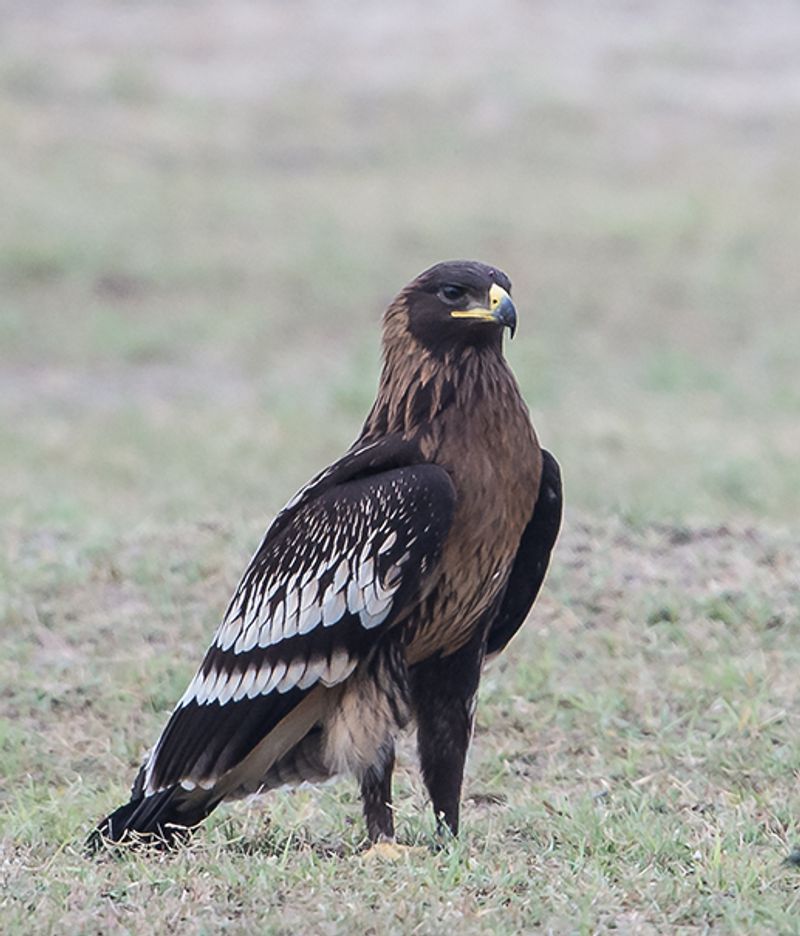
The greater spotted eagle, also known as the spotted eagle, is a large bird of prey belonging to the family Accipitridae.
This eagle species is characterized by its feathered legs, which is a feature that places it in the subfamily Aquilinae, also referred to as the “booted eagles.” This subfamily is comprised of a variety of different species of eagles, all of which share the same feathered leg characteristics.
The greater spotted eagle, along with the other members of the Aquilinae, are adept hunters and scavengers, feeding on a wide variety of animals and insects.
These birds of prey have powerful talons which they use to catch and carry their prey, and their strong wings allow them to soar through the sky for long distances in search of food.
They are also excellent predators, able to swoop down and snatch their prey with lightning speed. The greater spotted eagle is an important part of the global ecosystem, and its presence in the wild helps to maintain balance in its local environment.
| Kingdom | Animalia |
| Phylum | Chordata |
| Class | Aves |
| Order | Accipitriformes |
| Family | Accipitridae |
| Genus | Clanga |
| Species | C. clanga |
8. Lesser White-fronted Goose
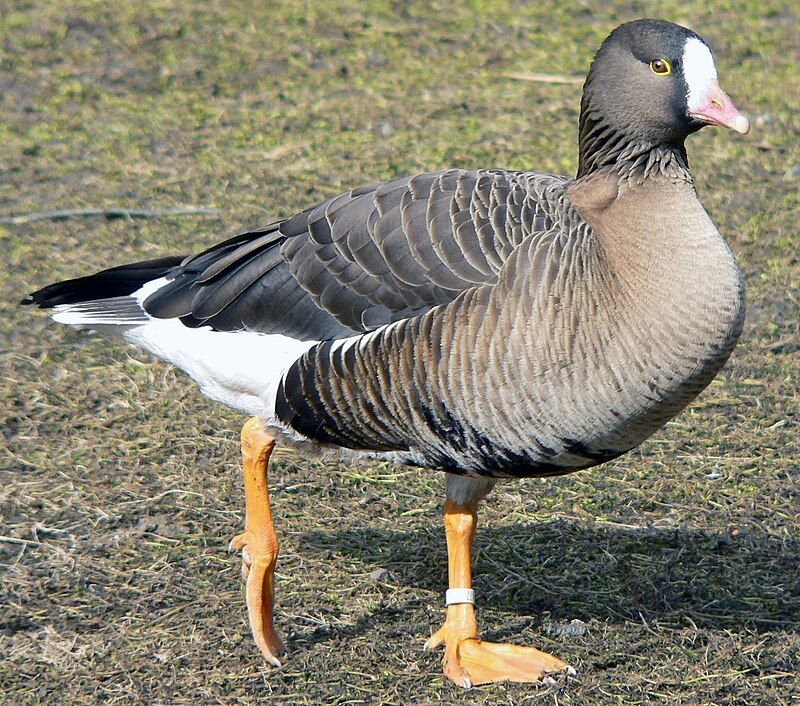
The lesser white-fronted goose is a species of goose that is closely related to the larger white-fronted goose. It is found in the northernmost regions of the Palearctic, from the easternmost parts of Europe to the westernmost parts of Asia.
It is considered to be a scarce breeder in Europe, however, with a reintroduction attempt being undertaken in Fennoscandia, which is the Scandinavian peninsula, and the Kola Peninsula in Russia.
The reintroduction effort is to help the species regain a foothold in Europe. The lesser white-fronted goose is a medium-sized goose, with both sexes having a greyish-brown back and wings, with the male having barred underwings and a white belly.
The face and upper throat of the adult male are also white, while the adult female has a light grey face and throat.
The lesser white-fronted goose is a migratory species, and during the winter it will migrate to warmer regions in Central and Southern Europe. The lesser white-fronted goose is listed as critically endangered on the IUCN red list, due to its decreasing population numbers and its habitat being threatened by human activity.
The species is protected in many countries, with hunting of the species being prohibited in some regions. Conservation efforts are being taken to help protect the species and its habitat and to help the species recover.
| Kingdom | Animalia |
| Phylum | Chordata |
| Class | Aves |
| Order | Anseriformes |
| Family | Anatidae |
| Genus | Anser |
| Species | A. erythropus |
9. White-headed Duck
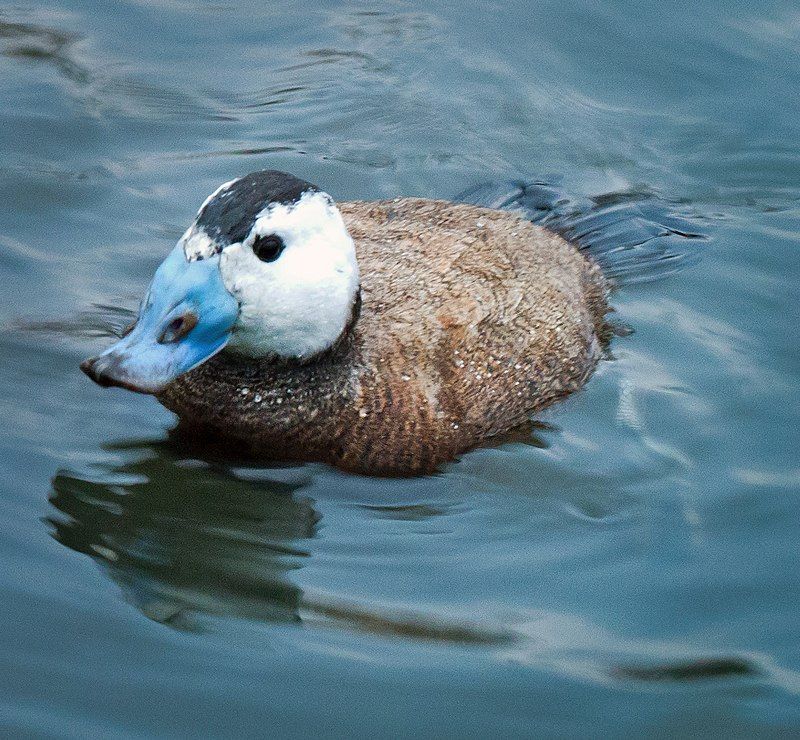
The white-headed duck is a species of small diving duck that is approximately 45 cm long. Males of this species have a distinctive white head with a black crown, a blue bill, and reddish-grey plumage.
Females, on the other hand, are characterized by a dark bill and duller coloration. This species is found in a distinctive habitat, namely, lakes with open water and dense vegetation at the edge.
The dense vegetation provides the necessary protection and cover for the ducks, and the open water allows them to dive and search for food. Furthermore, the vegetation helps to protect their eggs from predators.
The white-headed duck is an endangered species, and its numbers have been declining in recent years. Conservation efforts are underway to protect this species and ensure that its population remains stable.
| Kingdom | Animalia |
| Phylum | Chordata |
| Class | Aves |
| Order | Anseriformes |
| Family | Anatidae |
| Genus | Oxyura |
| Species | O. leucocephala |
10. European Green Toad
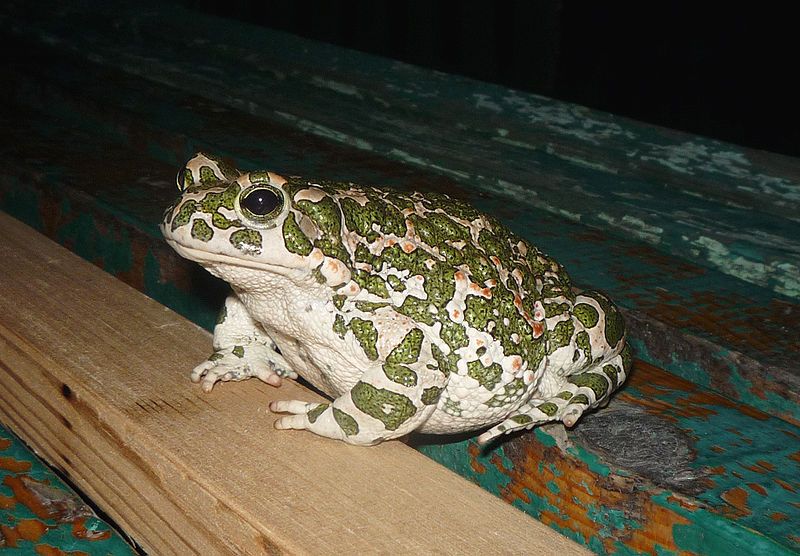
The European green toad is a species of amphibian found in a variety of habitats across mainland Europe. Its range extends from far eastern France and Denmark to the Balkans and Western Russia, including steppes, mountainous areas, semi-deserts, and urban areas.
This species of toad is quite adaptable and can live in a variety of habitats. The European green toad is typically found in damp areas, such as near streams, ponds, and marshes. It is a nocturnal species and tends to hide during the day in burrows or under logs and rocks.
This species of toad can vary in size, ranging from 3-7 centimeters in length. It has a typically green coloration, with dark patches on its back. The European green toad feeds on a variety of insects and other invertebrates.
The toad will lay its eggs in a shallow pool of water, which will then hatch into tadpoles.
These tadpoles will later develop into fully mature toads. The European green toad is considered to be an important species in Europe due to its wide range and ability to survive in a variety of habitats.
This species of toad is not currently endangered, however, it is important to conserve its natural habitats in order to prevent a decline in its population.
| Kingdom | Animalia |
| Phylum | Chordata |
| Class | Amphibia |
| Order | Anura |
| Family | Bufonidae |
| Genus | Bufotes |
| Species | B. viridis |
11. Glossy Ibis
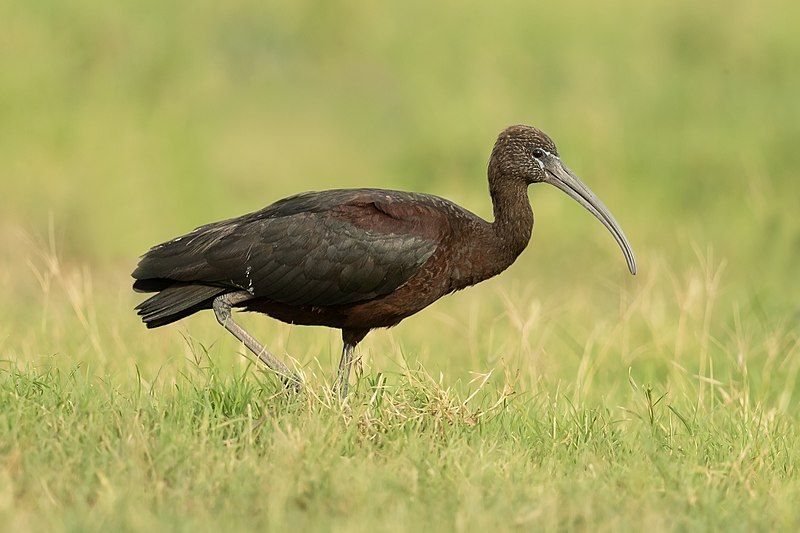
The glossy ibis is a species of water bird that is part of the order Pelecaniformes, which consists of a variety of aquatic birds. It also belongs to the ibis and spoonbill family known as Threskiornithidae.
The scientific name for the glossy ibis derives from Ancient Greek and Latin words which roughly translates to ‘sickle’. This is a reference to the curved shape of the bird’s bill. The glossy ibis has a somewhat unique bill shape compared to other species in the same family.
Its bill is curved in a sickle-like shape, which gives the bird a signature look. This curved bill allows the bird to forage for food in mud and shallow waters. The glossy ibis is a medium-sized bird that has a long neck and a long, thin bill.
It is typically found near wetlands, swamps, and other shallow bodies of water. The glossy ibis is a fascinating species that has captivated birdwatchers for centuries.
| Kingdom | Animalia |
| Phylum | Chordata |
| Class | Aves |
| Order | Pelecaniformes |
| Family | Threskiornithidae |
| Genus | Plegadis |
| Species | P. falcinellus |
12. Caspian Gull
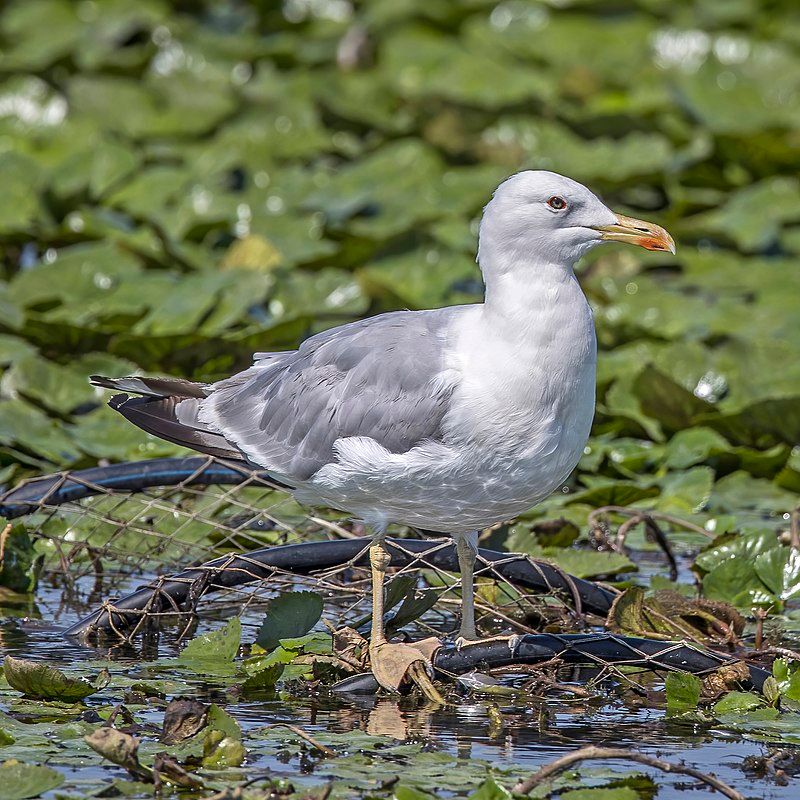
The Caspian gull is a large species of gull that belongs to the herring and lesser black-backed gull complex.
Its scientific name, Larus cachinnans, is derived from Latin, with Larus referring to a large seabird, while cachinnans means ‘laughing’, derived from cachinnare, which means ‘to laugh’.
This name likely reflects the fact that the Caspian gull is one of the noisiest of the gull species, with its loud call of “kree-ar” being heard from miles away. Its plumage is mainly white, with a black head and grey wings, and its large size makes it easy to identify.
The Caspian gull is also a migratory species, and it can be found in wetlands, coastlines, and estuaries throughout the Northern Hemisphere.
| Kingdom | Animalia |
| Phylum | Chordata |
| Class | Aves |
| Order | Charadriiformes |
| Family | Laridae |
| Genus | Larus |
| Species | L. cachinnans |
13. Cinereous Vulture
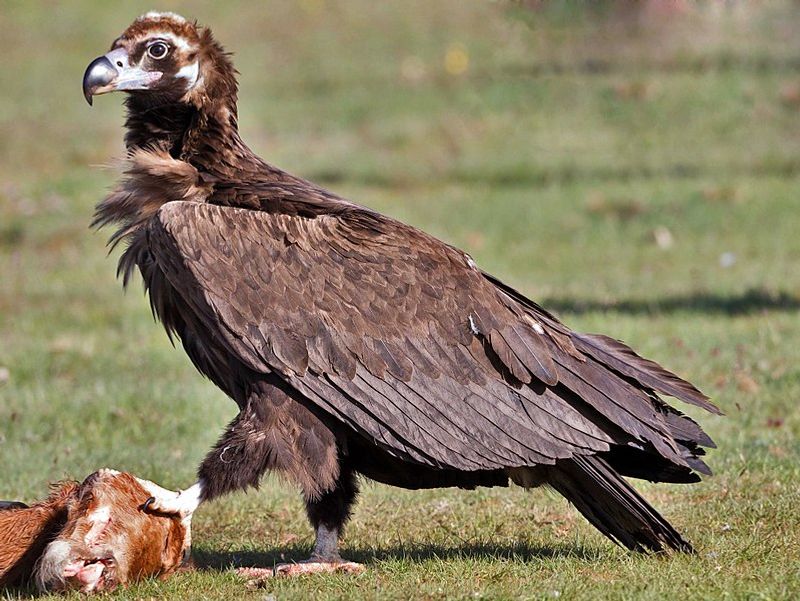
The cinereous vulture is a species of bird that belongs to the Accipitridae family, which includes eagles, hawks, and kites. It resides throughout a large portion of temperate Eurasia, from western Europe to as far east as Mongolia.
It is the largest of the Old World vultures and is also known as the black vulture, monk vulture, or Eurasian black vulture due to its dark brown to black feathers. This species of vulture is a scavenger, feeding primarily on the remains of dead animals.
It also has a powerful beak and claws, allowing it to tear through carcasses and defend itself against potential predators. Cinereous vultures play an important role in the food chain, removing the carcasses of dead animals that could otherwise spread disease.
They also provide valuable nutrients to other species, such as foxes, wolves, and other scavengers.
| Kingdom | Animalia |
| Phylum | Chordata |
| Class | Aves |
| Order | Accipitriformes |
| Family | Accipitridae |
| Genus | Aegypius |
| Species | A. monachus |
14. Cuculus Canorus
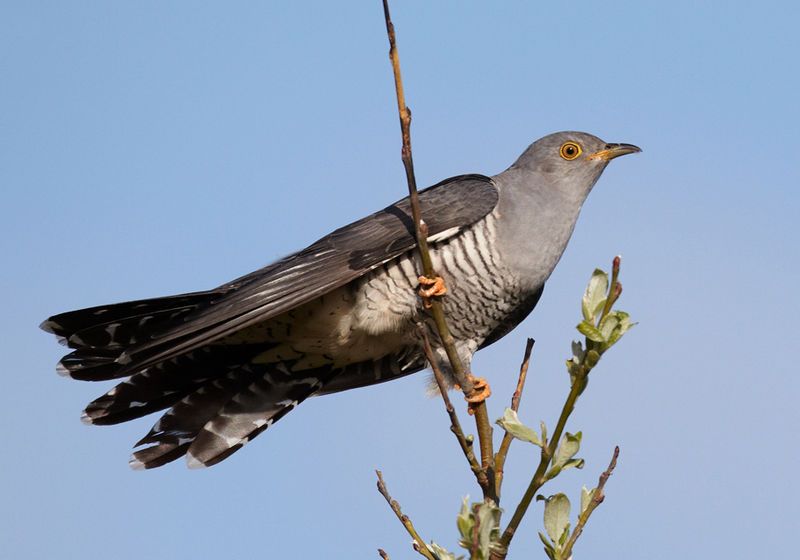
The common cuckoo is a species of bird belonging to the Cuculiformes order, which includes other birds such as roadrunners, anis, and coucals.
This species of cuckoo is a very common bird around the world, and migrates to Europe and Asia during the summer months and then travels to Africa for the winter.
The common cuckoo is a unique bird, as it is known for its distinctive call and for being a brood parasite, meaning that its eggs are laid in the nests of other birds, and the host bird then raises the cuckoo chick.
This species is also very vocal and has been known to produce a wide range of sounds.
| Kingdom | Animalia |
| Phylum | Chordata |
| Class | Aves |
| Order | Cuculiformes |
| Family | Cuculidae |
| Genus | Cuculus |
| Species | C. canorus |
15. Western Marsh Harrier
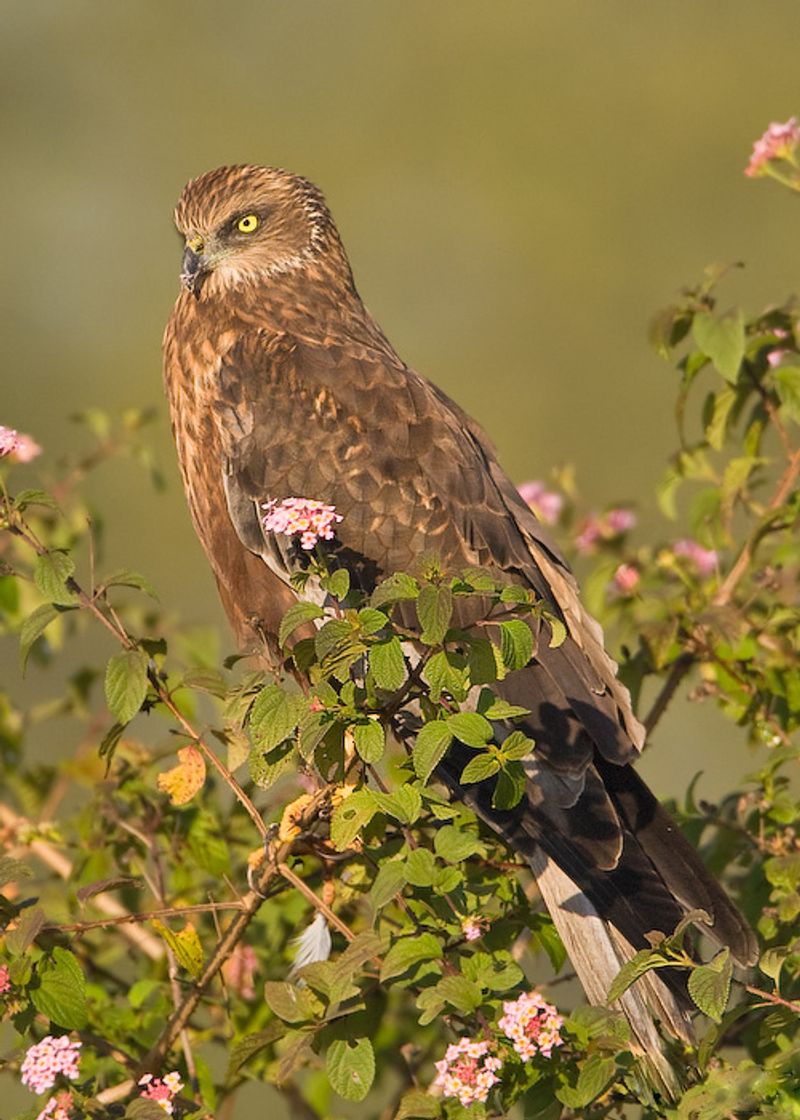
The western marsh harrier is a large bird of prey from western Eurasia and Africa. It is also known as the Eurasian marsh harrier. This bird is a member of the harrier family and inhabits temperate and subtropical regions.
It is distinguished by its size and its diet, which is mainly composed of small mammals, insects, and other small animals. In the past, a number of related species of the western marsh harrier were all included in one species known as the “marsh harrier” or C. aeruginosus.
This species had a wide range that included western Eurasia and Africa, and it was known for its large size and its diet, which was composed of small mammals, insects, and other small animals.
| Kingdom | Animalia |
| Phylum | Chordata |
| Class | Aves |
| Order | Accipitriformes |
| Family | Accipitridae |
| Genus | Circus |
| Species | C. aeruginosus |
16. Red-backed Shrike
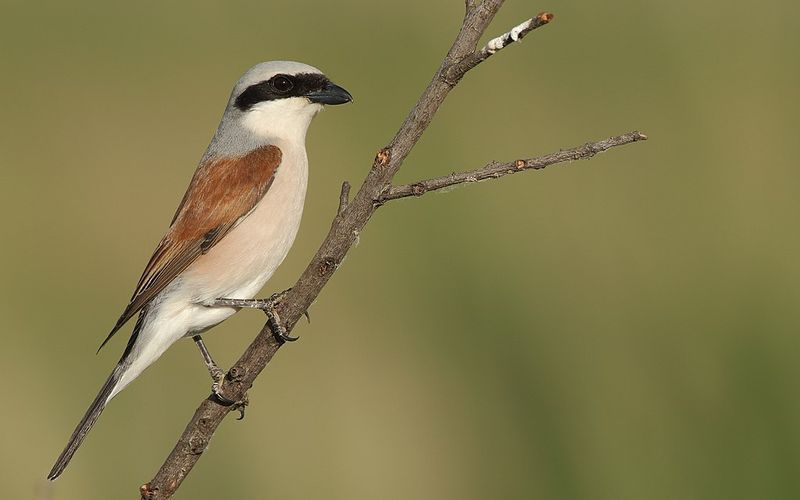
The Red-backed Shrike is a species of passerine bird belonging to the Shrike family, Laniidae. It is a carnivorous bird, meaning that it feeds mainly on animals such as insects, lizards, and small birds.
The breeding range of the Red-backed Shrike stretches over a large geographical area, encompassing much of Western Europe and parts of Central Russia. As a migratory bird, it spends winters in tropical and southern Africa.
During these months it can be found in areas of the eastern part of the continent. This species is classified as Least Concern on the IUCN Red List and is thought to have a large and steady population.
| Kingdom | Animalia |
| Phylum | Chordata |
| Class | Aves |
| Order | Passeriformes |
| Family | Laniidae |
| Genus | Lanius |
| Species | L. collurio |
17. European Bee-eater
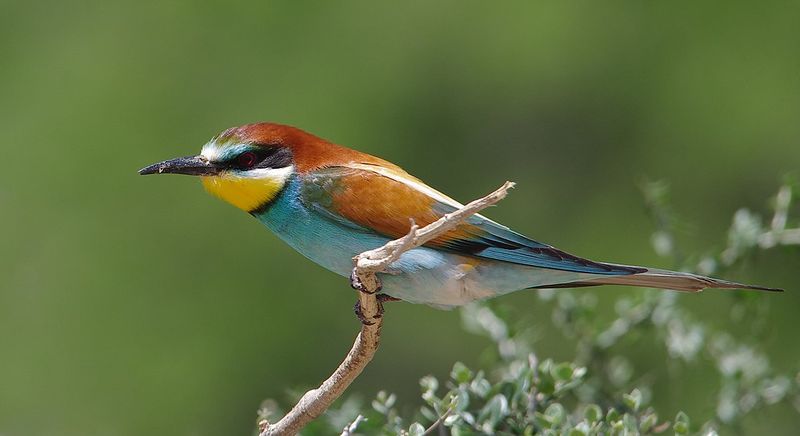
The European bee-eater is a beautiful and vibrant bird native to a wide geographical area. It is a member of the bee-eater family, Meropidae, and is found in parts of southern and central Europe, northern and southern Africa, and western Asia.
It is mostly a migratory bird, with the resident population in southern Africa being the only exception.
During winter, the species migrates to tropical Africa, where it finds more favorable conditions. The European bee-eater is an incredibly colorful bird, with its feathers ranging from shades of blue, green, yellow, and orange.
It is a fairly large bird, measuring up to 28 centimeters in length, with a wingspan of up to 43 centimeters. It is a carnivorous bird, feeding mainly on insects, especially bees.
It catches its prey in the air and then proceeds to beat it against a perch to get rid of the stinger and venom. The European bee-eater is a social bird and is usually found in flocks. It is also an incredibly vocal bird, with its calls being quite loud and distinctive.
It is an important bird in the areas where it resides, as it helps control the population of bees, and thus helps farmers in protecting their crops. It is also an important part of the food chain, as its presence helps maintain the balance of the environment.
| Kingdom | Animalia |
| Phylum | Chordata |
| Class | Aves |
| Order | Coraciiformes |
| Family | Meropidae |
| Genus | Merops |
| Species | M. apiaster |
18. Corvus Frugilegus
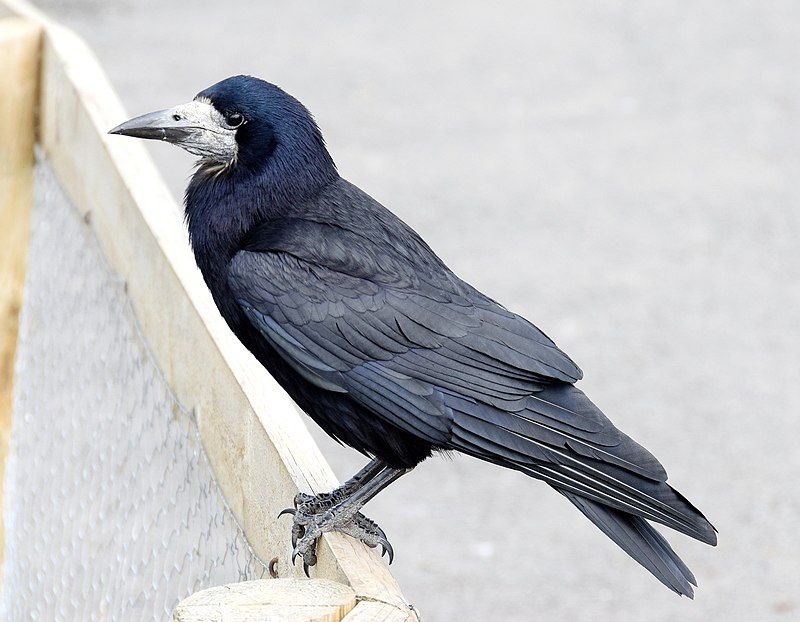
The rook is a large passerine bird that belongs to the Corvidae family. It is found in the Palearctic, with its range stretching from Scandinavia and Western Europe to Eastern Siberia. This bird is gregarious, meaning it lives and moves in flocks, and is black-feathered.
One of the most distinguishing features of the rook is the whitish, featherless area on its face. This facial patch is unique to the rook and helps to separate it from other similar species.
In addition to its distinctive facial features, the rook is known for its intelligence and resourcefulness. It has been observed using sticks and twigs to build nests, and can even recognize human faces.
It is also a social bird, often seen in groups of up to hundreds of individuals. The rook is also an omnivore, meaning it will feed on both plants and animals. This allows it to survive in a variety of habitats and climates. The rook is an important species for its ecosystem.
It helps to control pests, disperses seeds, and even acts as an indicator of environmental health. As a result, conservation efforts have been implemented to protect the rook and its habitat. With the right management, the rook can continue to thrive in its natural range.
| Kingdom | Animalia |
| Phylum | Chordata |
| Class | Aves |
| Order | Passeriformes |
| Family | Corvidae |
| Genus | Corvus |
| Species | C. frugilegus |
19. Black-headed Bunting
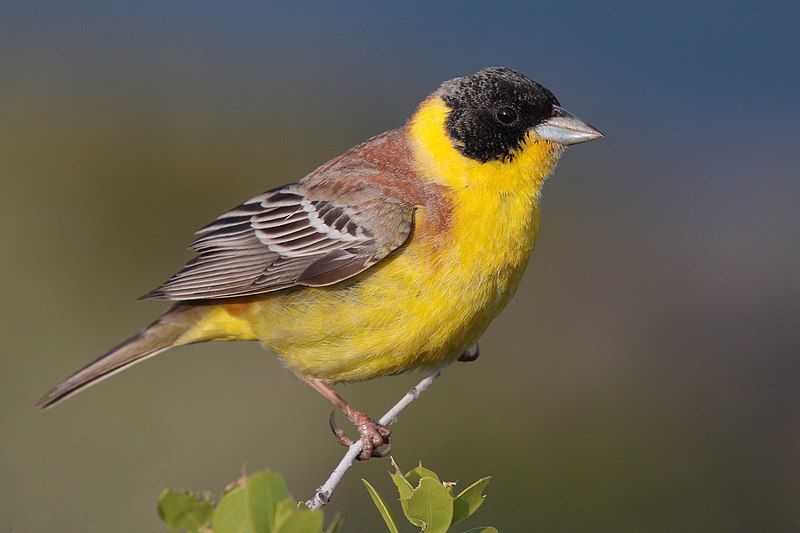
The black-headed bunting is a type of bird in the Emberizidae family, also known as the bunting family. It mainly breeds in southeast Europe, stretching east to Iran. During winter, they migrate mainly to India, although some individuals travel further into southeast Asia.
This bird species is known for its distinctive black head, which is found in both the male and female varieties. The black-headed bunting is a fairly small bird, measuring between 12 and 14 centimeters in length.
They mainly feed on insects, although they have been known to eat seeds and fruits. Their diet also consists of a variety of grains, such as wheat and barley. The black-headed bunting is a migratory species, which means that they travel from one area to another seasonally.
During the winter, they migrate to India and other parts of southeast Asia, where they can find food, suitable temperatures, and other resources. In the summer, they return to their breeding grounds in south-east Europe.
The black-headed bunting is an important part of the ecosystem, as it helps to maintain the balance of the food chain. They are also important pollinators, as they feed on nectar and other plant parts.
These birds play an important role in helping to ensure the health of the environment.
| Kingdom | Animalia |
| Phylum | Chordata |
| Class | Aves |
| Order | Passeriformes |
| Family | Emberizidae |
| Genus | Emberiza |
| Species | E. melanocephala |
20. Marbled Duck
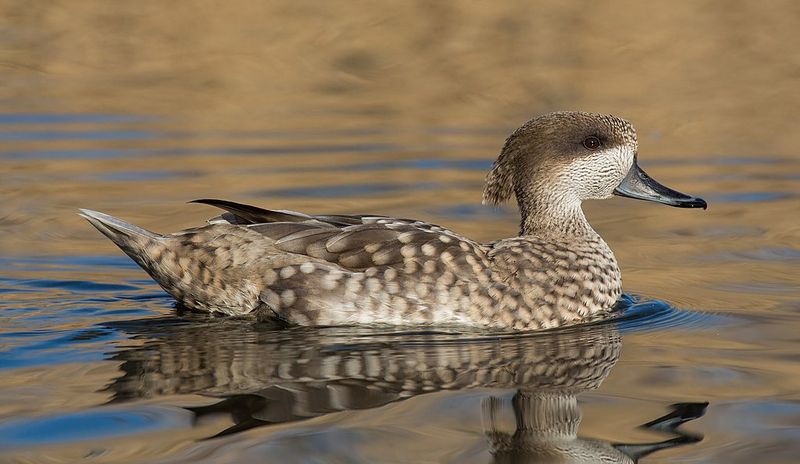
The marbled duck, also known as the marbled teal, is a species of duck native to several parts of the world, including Europe, Africa, and Asia. It is a medium-sized species that is easily recognized by its unique marbled pattern of colors.
The second half of the name, Netta, is the Greek word for duck, while Augustus means narrow or small, and -rosters refers to its billed beak. This scientific name helps to distinguish the marbled duck from other species of duck.
| Kingdom | Animalia |
| Phylum | Chordata |
| Class | Aves |
| Order | Anseriformes |
| Family | Anatidae |
| Genus | Marmaronetta |
| Species | M. angustirostris |
21. Red-breasted Goose
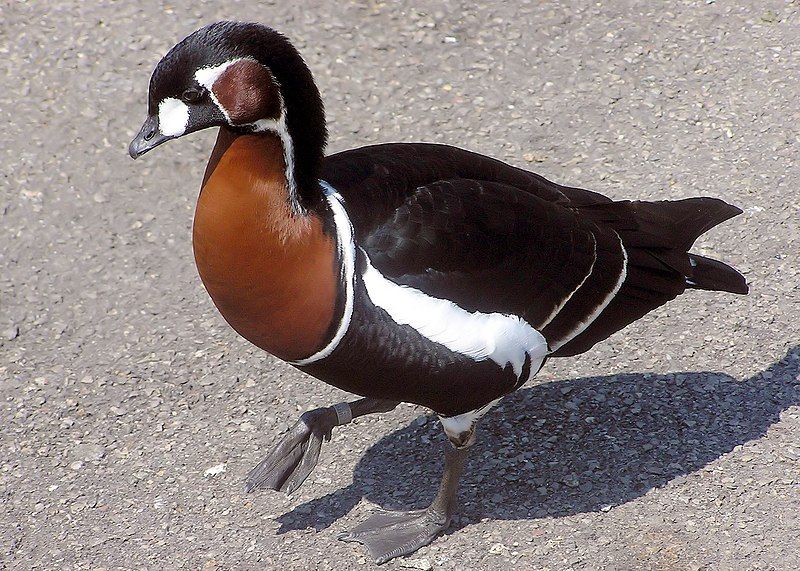
The red-breasted goose is a species of goose from Eurasia that is known for its bright markings. It is a member of the genus Branta, which includes other species such as the Canada goose, greylag goose, and barnacle goose.
This particular species is classified as vulnerable by the International Union for Conservation of Nature (IUCN). This means that the population of red-breasted geese is of concern due to the threats they face, such as habitat loss and degradation, overhunting, and pollution.
As a result, conservation initiatives have been put in place to help protect and restore the populations of this species. These include habitat protection and restoration, regulation of hunting, and reducing pollution.
Such efforts are vital to ensuring the future of the red-breasted goose and other species of goose in the genus Branta.
| Kingdom | Animalia |
| Phylum | Chordata |
| Class | Aves |
| Order | Anseriformes |
| Family | Anatidae |
| Genus | Branta |
| Species | B. ruficollis |
Conclusion
Birds are a vital part of Dagestan’s natural beauty and diversity. They are an integral part of the environment and contribute to the overall health of the region.
The variety of species found in Dagestan provides a unique habitat for birds of all kinds and is a great place for bird-watching and conservation efforts.
With proper protection and management, the birds of Dagestan can continue to thrive and provide a great source of enjoyment for all.